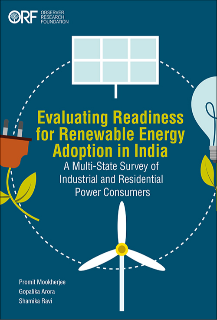
Sri Lanka is facing its worst economic crisis since independence. A financial crisis and the resulting shortage of foreign exchange has led to an inability to purchase required amounts of fuel, caused restrictions in the uninterrupted supply of electricity, created shortages of basic commodities, and generated much disenchantment with the governance of the country.
The severity of the energy crisis is seen and felt throughout the island. From a fuel consumption perspective, long queues are witnessed at filling stations, while power generating facilities are curtailed, thereby, subjecting the country to power breaks for many hours daily. Affecting industries irrespective of size, damaging productivity, and deterring prospective investment from investors who are hesitant to enter the market, the need of the hour is a resolution of the economic crisis. However, in the long term, Sri Lanka needs to adopt a strategised energy policy to meet the growing demand.
Affecting industries irrespective of size, damaging productivity, and deterring prospective investment from investors who are hesitant to enter the market, the need of the hour is a resolution of the economic crisis.
Decades ago, the electrification of countries led to massive improvements in a plethora of spheres. Although seen as a sign of development then, electricity is a necessity today. Yet reliance on fossil fuels exacerbates issues as demand continues to grow and supply remains limited, as prices fluctuate in the world market. While alternatives are viable, and have been available for decades, the transfer from high carbon content options to a more environmentally conducive recourse has been gradual though consistent. In light of the energy crisis that has hit Sri Lanka, it is opportune to revisit the need for green energy options. The abundance of sources makes it the preferred option, but capital and technology remain the main hurdles. At this juncture, Sri Lanka needs to strategise for the future with greater emphasis on securing technical support, recommitting to increased renewable energy transition, and comprehending successful examples from the region.
Status quo
A co-publication by the Asian Development Bank(ADB) and United Nations Development Programme in 2017 highlighted Sri Lanka’s progress in the electricity sector, with generation having increased by fourfold from 1992 to 2016; electricity access having reached 100 percent by the end of 2016, from 50 percent in 1990; technical loss in transmission and distribution being less than 10 percent which they noted implied an efficient operation; and there was the establishment of an independent regulatory body for the electricity sector.
Sri Lanka was also identified amongst 43 countries of the Climate Vulnerable Forum that had consented to 100 percent electricity generation by renewable means by 2050 the latest, and had signed the declaration at the 22
nd Conference of Parties (COP22) of the United Nations Framework Convention on Climate Change (UNFCCC) in Morocco. Although considered ‘highly ambitious’ by the ADB and UNDP at the time given that the country expected
‘a steep increase in per capita electricity consumption for years to come’, the commitment remains commendable and must be vigorously pursued.
The inking of an agreement between institutions in India and Sri Lanka for a joint venture to establish a solar power electricity generating plant in Sampur was perhaps the only good news that Sri Lankans received in weeks.
The ‘Sri Lanka Energy Sector Development Plan for a Knowledge-based Economy’ for the period 2015 to 2025 noted that in order to meet energy requirements, the country needed “
to import 02 MMT of crude oil, 04 MMT of refined petroleum products, and 2.25 MMT of coal annually. This costs the government approximately US$5 billion in foreign exchange, which is nearly 25 percent of their import expenditure, and nearly 50 percent of total export income, resulting in a huge burden on its balance of trade and exchange rates.”
Way forward
The current crisis in Sri Lanka is not a small issue that will fade away. This is not a problem that will be solved merely with the passage of time. It is a crisis of national proportions that requires strategised measures to address the issues of the day, whilst preparing for those that will be encountered in the months and years ahead.
Therefore, the inking of an agreement between institutions in India and Sri Lanka for a joint venture to establish a solar power electricity generating plant in Sampur was perhaps the only good news that Sri Lankans received in weeks, but one that would yield results in the long term and assist in addressing a much-needed requirement in Sri Lanka. A decade ago, plans were afoot to establish a joint coal-power plant in Sampur, but were later abandoned over much criticism. In hindsight, the move appears to have been prudent as the latest venture will result in Sri Lanka ‘learning to fish’ rather than merely ‘receiving the fish’.
Solar power in India is a fast-developing industry as the country has achieved targets for 2022, well ahead of time. Whilst
being ranked third in the Renewable Energy Country Attractive Index in 2021, India has the
third largest installed capacity of renewable energy globally, and is currently in the
fifth position for solar installation capacity. As a co-founder of the International Solar Alliance with France, India has been instrumental in ushering in a new age of renewable energy diplomacy, as countries globally, having realised the potential of such energy sources are joining the effort, and increasing their solar power footprint.
Solar power is but one option that needs to be vigorously explored. Wind and wave energy are alternatives that require wider investigation. India possesses the fourth largest installed capacity for wind power in the world, enhancing its green power credentials. Having total installed wind capacity at 1GW in 1997,
India was able to increase it to 22GW over two decades, wherein private sector investment was encouraged. This progress bodes well for Sri Lanka as an immediate neighbour.
India possesses the fourth largest installed capacity for wind power in the world, enhancing its green power credentials.
Sri Lanka needs long-term technical cooperation, which whilst boosting India-Sri Lanka relations, would act as a catalyst for the island nation to achieve its true potential. Whether through joint initiatives or technology transfers, immediate measures are needed to secure returns in the long term, given that energy transition takes a considerable period of time. Unless concerted effort and continuous commitment is witnessed, boosting of renewable energy diplomacy will not become a reality.
An energy independent Sri Lanka is in India’s interest. As the island attempts to overcome its current crises and looks to the future, it is clear that increased investment in industry remains a solid basis upon which the future can be strategised. Yet energy remains the backbone and cannot be compromised. With the growth of demand and the use of green options, Sri Lanka would be able to create a conducive environment to attract investment from around the world, quelling Indian concerns of the island’s reliance on a single or limited partners. An economically strong Sri Lanka gives India a sound trading partner and a stable neighbour.
While Sampur on the East coast is one location, similar joint projects need to be initiated across the island to augment the existing power supply, and enable a faster transition in the next decade. A rigorous approach wherein multiple plants are established would augur well. In addition to solar, Sri Lanka needs to seek enhanced expertise in the sphere of wind energy, and attempt to maximise on natural resources the island possesses. Renewable energy has massive potential for bilateral cooperation and can be the catalyst of diversifying the already widespread connectivity, while contributing positively to mitigate climate change, and benefit the people of both the countries.
Since the end of hostilities in 2009, attempts have been made to induce the international community to identify the island as an attractive investment destination. Yet such measures prove futile when the country faces crises as those experienced at present. India has done much to support its southern neighbour through financial and economic assistance. Such measures help in the short term as Sri Lanka tides over the current crises but it is vital to ensure due focus on sustainable and viable options to face the foreseeable future.
In enhancing diplomatic connectivity on the eve of the 75
th anniversary of diplomatic relations between India and Sri Lanka, renewable energy diplomacy has the potential of consolidating the firm bonds of friendship between the two historically linked countries, in the decade ahead, and as such needs to be urgently explored.
The views expressed above belong to the author(s). ORF research and analyses now available on Telegram! Click here to access our curated content — blogs, longforms and interviews.



 Sri Lanka is facing its worst economic crisis since independence. A financial crisis and the resulting shortage of foreign exchange has led to an inability to purchase required amounts of fuel, caused restrictions in the uninterrupted supply of electricity, created shortages of basic commodities, and generated much disenchantment with the governance of the country.
The severity of the energy crisis is seen and felt throughout the island. From a fuel consumption perspective, long queues are witnessed at filling stations, while power generating facilities are curtailed, thereby, subjecting the country to power breaks for many hours daily. Affecting industries irrespective of size, damaging productivity, and deterring prospective investment from investors who are hesitant to enter the market, the need of the hour is a resolution of the economic crisis. However, in the long term, Sri Lanka needs to adopt a strategised energy policy to meet the growing demand.
Sri Lanka is facing its worst economic crisis since independence. A financial crisis and the resulting shortage of foreign exchange has led to an inability to purchase required amounts of fuel, caused restrictions in the uninterrupted supply of electricity, created shortages of basic commodities, and generated much disenchantment with the governance of the country.
The severity of the energy crisis is seen and felt throughout the island. From a fuel consumption perspective, long queues are witnessed at filling stations, while power generating facilities are curtailed, thereby, subjecting the country to power breaks for many hours daily. Affecting industries irrespective of size, damaging productivity, and deterring prospective investment from investors who are hesitant to enter the market, the need of the hour is a resolution of the economic crisis. However, in the long term, Sri Lanka needs to adopt a strategised energy policy to meet the growing demand.
 PREV
PREV


